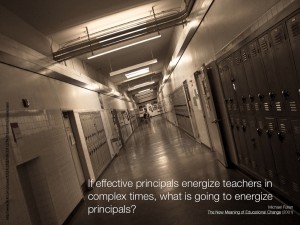 A short while ago I posted Learning as Leaders, a personal reflection of my experiences with our state’s PA Inspired Leaders (PIL) initiative. Our state enlisted the services of National Institute for School Leadership, NISL, as one of two curriculum providers for our state’s program. NISL has “worked with Pennsylvania to develop state standards for school leaders, design training programs that give participants the skills to meet these standards, and create assessment tools that measure the effectiveness of the program.”
A short while ago I posted Learning as Leaders, a personal reflection of my experiences with our state’s PA Inspired Leaders (PIL) initiative. Our state enlisted the services of National Institute for School Leadership, NISL, as one of two curriculum providers for our state’s program. NISL has “worked with Pennsylvania to develop state standards for school leaders, design training programs that give participants the skills to meet these standards, and create assessment tools that measure the effectiveness of the program.”
Apparently at least one person reads my blog, because the post and its contents found their way to the PA Department of Education and supposedly to the NISL folks in Washington. The PIL program leader contacted me the week after my post was published and asked me to call him to discuss my experiences.
I nervously called the program leader, not sure how the organization would view my constructive criticism. We had a great conversation, and he shared that he and others had been working to ensure the program could continue to be funded for the future. He closed by asking me to put together my ideas for how the program could become more collaborative/networked in nature and meaningful for participants.
I think this is a really exciting opportunity, and I’m pleased that I have the chance to share my thoughts on this issue, even if the ideas never come to fruition. That being said, I know some folks at PDE and NISL are likely bothered by the fact that I publicly reflected upon my program experiences. I’m okay with that, because, honestly, we’re asked to put our feedback in writing after every single session. The evaluation form asks participants to rate the facilitator, the session’s organization, content, etc. on a Likert scale, and I’ve watched my table mates simply check off boxes to be able to get out of the room in a timely manner. Many do not leave descriptive feedback in the comments sections. I know there are other participants who share my sentiments, whether they chose to express them on those evaluations or not. My reflections found an audience, and for that I am grateful, especially if it helps to bring about positive change.
I’d like to reiterate that the NISL program content is very powerful, and I’ve been able to apply many of the concepts learned in my work as an administrator. The course organization and content delivery, however, assume that all administrators in the PIL program are in need of the exact same type of professional development, delivered in a one-size-fits-all-we’re-going-to-lecture-to-you-now mode. That has been my experience.
The online content portal lacks depth and includes no capabilities to connect with other course participants. I’d be interested to know how many principals actually spend time engaged with the online material. It includes specified areas for reflection- a “journal” if you will- but the mechanisms for doing so are cumbersome and do not allow for a continuous flow of reflective thoughts to enhance practice. The inclusion of a reflective mechanism for both individual reflections and those that could be shared with colleagues across the state would be very beneficial.
And while the issue of “powering down” during training sessions was irksome to me, and while most of the administrators and PIL facilitators I encounter in face-to-face PD sessions are not yet utilizing technology tools to facilitate their own learning experiences let alone the learning of others, the changes necessary to better connect administrators across our state and develop cohesive networks of school leaders are going to necessitate the use of internet-based, social media and communication tools.
In my PIL experience, some facilitators were able to better engage participants than others. Those facilitators planned opportunities for meaningful participant-talk time. As I stated in my previous post, most of us are just longing to have the time to speak with other administrators and learn how they are handling issues and strategizing in their schools. Our PIL cohorts are localized mainly to our county, with a few principals from neighboring counties in attendance. Imagine the power if we connected PIL participants across the entire state via social networks and created the mechanisms for true learning communities to blossom?
Over my past five years in educational administration, no matter how many principals I speak with, no matter if the principal works in a small rural school or a bustling urban district, and whether he has 2 or 20 years in the principalship, one thing remains certain: administration can be a lonely gig. To be the most effective leaders we can be, we need access to one another. We need to develop strong networks of support, resources, and knowledge. There is great value in developing personal and professional learning networks. More and more educators are starting to realize this, and they’re learning to use digital tools to take advantage of the wealth of knowledge that exists in the minds and hearts of educators around the world. Consider, too, that the U.S. Department of Education has declared August Connected Educator Month and has worked with a number of learning organizations to plan and share webinars, online professional development, and opportunities for collaboration among educators worldwide. I have professionally benefited from being a connected educator, and I know many of my administrative colleagues have as well. There is power in the network.
So, where does that leave us with planning professional development for educational leaders?
I’d love your help. I’m asking my fellow administrators and educational leaders to please take a few moments of your time to reflect upon your own professional development experiences and share them with me through the survey below. Direct link here. Also feel free to email me lynhilt@gmail.com and/or send your thoughts via tweet @l_hilt.
Your honest feedback on learning as an educational leader and the conditions necessary to yield the most powerful professional development possible will help me craft my ideas to share with PDE. I greatly appreciate your time and involvement in my PLN! Many thanks.

Hey Lyn,
I was particularly struck by your statement: “To be the most effective leaders we can be, we need access to one another.”
I work for an ed-tech start-up and we’re building a platform for educators to collaborate–Administration clearly needs to be part of this process.
Is there a time we could chat so I could learn more about solving the problem you highlighted: “The online content portal lacks depth and includes no capabilities to connect with other course participants.”
Respectfully,
Scott
scott@classconnect.com
Lyn,
Great follow up to a much needed critique of the PIL’s program. I hope that NISL is serious about improving the program because I feel it lacked content and rlevance to our job. Educators believe we need to prepare students for their future using new and improved instructional techniques but we rely on the old model for our professional development. If NISL or anyone else is serious about changing their PD they need to consider the use of technology, facilitators who are in the trenches, not retirees who have been out of a building for 5+ years, and content that is more relevant to today’s Educational leader. If they ever ask you for people who you think might be good at collaborating on PD, count me in.
Bill, thanks for your honest feedback. I agree with the areas of concern you’ve listed here. I am looking forward to reading the input I receive on the survey and compiling everyone’s recommendations. I am hoping the program coordinators give our feedback real consideration moving forward.
Lyn,
Great job with having at least one person following you 🙂
I think that PILS and NISL have a place in administration PD, however, I also believe that many districts have passed what NISL offers and deliver much more meaningful PD in house. When PILS started, there were many districts that were not offering PD to their administrators, if you were lucky to be in a forward thinking district, you were discussing books in your PLC that dealt with leadership and team building, etc. PILS offered this to all admins across the state and it was required to anyone new.
Now, the info is old, everyone knows that you have to have data and data teams and goals must be measurable, etc, etc, etc. Every district is doing this.
Today, administrators need to be looking at how to bring students back, facing budget shortfalls, furloughing teachers, meeting unfunded mandates, implementing new statewide teacher evaluations where 50% of the rating is from student performance and there is now a commendable rating, dealing with PSSAs and Keystone exams. We have to also prepare our students for the 21st century, wait is is the 21st century, we need to teach them about online safety, how to manage and use a smart phones, I could go on forever.
The point is, in my opinion, administrators in PA have outgrown PILS as it is today.
John, thank you for commenting! The silence in the room was deafening at yesterday’s session. I think it speaks volumes that when asked to reflect upon past coursework with the program, very few of us could cite meaningful take aways and/or explained how we’ve used the content and applied it to work in our districts.